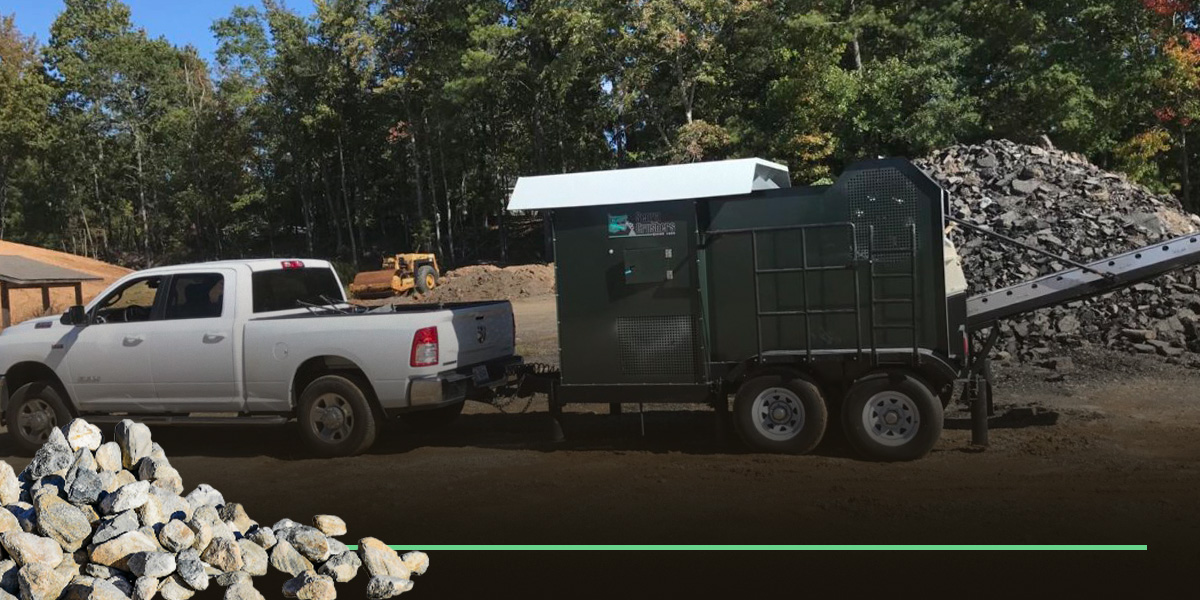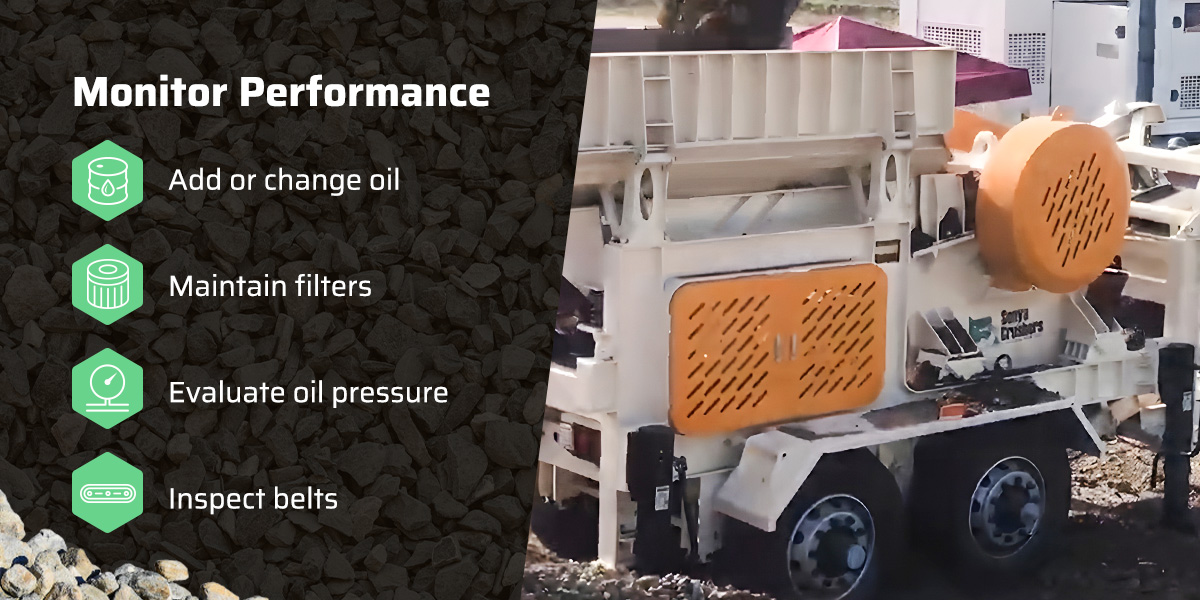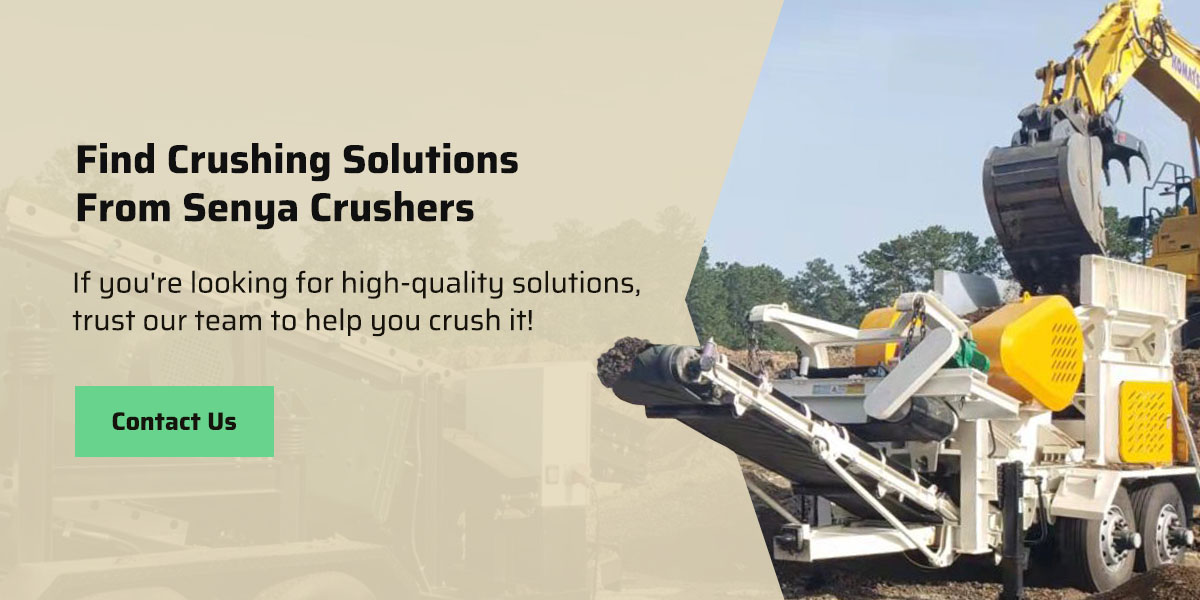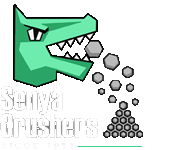
Delivering timely care and preventive maintenance is critical to enhancing equipment life, operator safety and optimal functioning. Thankfully, you can maintain your machine and prevent downtime and unnecessary spending in several ways.
Check out these top tips for rock crusher maintenance.
1. Administer Regular Inspections and Maintenance
First and foremost, you must recognize the importance of regular inspections and maintenance. A comprehensive maintenance plan ensures you deliver the proper care to your equipment before potential issues grow. Implement these maintenance plans:
- Preventive: Preventive maintenance is the care you administer to avoid issues from occurring. For example, daily inspections for wear and tear, belt alignment, and lubricating moving parts are key elements of preventive maintenance. Proper engine maintenance is also crucial. Regularly check all engine fluid levels and keep air filters sufficiently clean, as well as maintain all fluid and fluid filter changes and engine manufacturer maintenance schedules. These actions ensure your equipment performs well and allow you to identify potential problems before you face severe issues or breakdowns.
- Predictive: When you understand how long components typically last or recognize the signs of aging pieces, you can implement predictive maintenance. Operating hours, run times and cycles can depict when a component may need repairing or replacing. Keep track of these metrics and have replacement components ready for a quick switch during off-hours to prevent downtime.
- Scheduled: While you can do many inspections and maintenance actions yourself, there are times when you need a professional. For instance, you should request an annual tune up service to determine whether any internal components or parts you cannot reach are functioning efficiently. Always keep a maintenance log to ensure timely care practices and to aid in your preventive and predictive plans.
- Reactive: Your last line of defense against costly repairs is administering reactive maintenance. While it’s best to address issues before you experience a breakdown or component failure, sometimes you might not catch the problem until it’s too late. Avoid using equipment with damaged, worn or broken components. Administer proper care or request a professional service to address the issue before beginning use again. Always contact the manufacturer of your equipment with any questions that may arise.
2. Ensure Proper Training for Operators
Proper training ensures proper equipment use, which is vital for operator safety and maintaining crushing equipment. Each team member should understand how to use the crusher, maintain it and troubleshoot any issues. Craft a training program that outlines safety protocols for handling the rock crusher and how to identify operational concerns. Form a plan for reporting and addressing any issues that appear and when operators can safely resume tasks.
3. Monitor Performance
Tracking performance metrics is another great way to ensure system efficiency. You can use performance metrics to detect abnormalities you may otherwise not notice. For example, throughput can depict whether your crusher is operating at optimal speed, and vibration levels can inform you of balance or alignment issues. Adjust any settings necessary for optimal performance before beginning as well as during operation.

You can also use visual checks to monitor functionality. Add these steps to your daily inspection:
- Add or change oil: Use manufacturer specifications to determine the type and amount of oil your crusher needs. Standard life spans for crusher oil max out around 1,000 hours, but you can verify this number with your manufacturer.
- Maintain filters: The lubrication, breather, and air filters are essential components for your crusher. The lubrication filter removes oil contaminants that can negatively impact crusher components, and the breather filter allows oil to flow into the tank. The extreme dust that can arise in the crushing environment makes regular monitoring of your engine’s air filtration system crucial. Contamination can quickly impact these filters and, ultimately, damage your crusher and it’s engine. Clean these filters regularly, and refer to manufacturer specifications for replacement recommendations.
- Evaluate oil pressure: Depending on the rock crusher you choose, oil pressure requirements will vary. However, low pressure generally indicates a leak, and high pressure may reveal a blockage. Older crushers often have lower pressures than newer models, but your manufacturer can inform you of the proper oil pressure for your specific crusher.
- Inspect belts: Adjust skirting as needed and look for belt damage before each operation. Having belt clips on hand can enable quick repairs on the spot and resume efficient operations. Always be sure of proper alignment of belts to prevent unnecessary wear and tear.
4. Keep a Spare Parts Inventory
Keeping essential spare parts on hand is one of the best ways to minimize downtime and boost productivity. Your crusher needs will vary, depending on the type you buy. Here’s an overview of the parts you should keep on hand for each type:
- Jaw crusher: These crushers are among the most popular and are ideal for working with many materials. Keep common components like jaw plates, bearings for the main frame and shaft, bolts and fasteners, dust seals and wedge blocks.
- Impact crusher: Teams dealing with construction waste, limestones and other raw materials often rely on impact crushers. Create an inventory of spare parts such as side liners, impact plates, blow bars, bearings and bearing housings, v-belts, dust seals and chamber liners.
- Cone crusher: Cone crushers can work with some abrasive feeds and are popular for secondary and tertiary crushing. Spare components include mantles, concaves, spider caps, bearings, hydraulic hoses and fittings, bowl liners, dust seals and gaskets, frame liners, lifting hooks, lifting gear and feed tubes.
- Rock crusher plant: Portable crushing plants will require specific parts, depending on whether you opt for a cone, impact or jaw crusher. You may also need parts like conveyor belts, feed hoppers, hoses, fittings and liners.
- Additional crusher types: There are many other types of crushing machinery, including roller, ball, hammer and vertical roller mills. Look at your crusher and refer to manufacturer recommendations to determine the best components to keep on hand.
Beyond having these spare components on hand, craft a replenishment system. Keep track of how often you need to repair or replace parts. Record every maintenance step you administer, and order spare parts well before you need them to account for unexpected problems.
5. Evaluate Environmental Conditions and Considerations
It’s important to consider environmental conditions when stone crushing. The dust and noise crushers produce can harm the environment, and strict compliance guidelines ensure teams minimize impact and complete operations safely and legally. Cold weather can have a dramatic effect on your crushing equipment and special care and precautions must be taken, especially in extreme cold. Here’s what you need to know about crusher environmental conditions:
- Dust: Dust control is critical for rock crushers. Crushing operations can emit a lot of dust into the surrounding area, impacting equipment, workers and other living creatures nearby. Proper dust control systems minimize dust exposure and movement, helping to contain it for easy removal or cleaning.
- Noise pollution: Like many pieces of equipment, rock crushers can be loud. However, proper maintenance can reduce noise pollution and boost machine performance. For instance, your crusher may experience excessive vibrations or emit loud noises when components become loose or worn. Addressing component concerns can stabilize your equipment, extend life and reduce associated noise.
- Compliance: Environmental compliance and regulations are some of the first things you need to know before beginning rock crushing operations. You must understand your local, state and federal responsibilities and implement best practices for meeting industry standards.
Cold Weather operation of Diesel over electric systems (electric motors powered by diesel generator configuration):
Cold weather at freezing temperatures and below can dramatically affect your crushers engine, fuel, drive and conveyor belts, bearings, bearing grease, and jaw housing.
- Engine: In extreme cold your diesel generator engine may require glow plugs. Glow plugs help start a diesel engine by warming the combustion chamber, ensuring the fuel ignites properly in cold conditions. They improve engine performance, reduce emissions, and enhance reliability. There are also engine block heater blankets and even engine block heaters that prevent engine fluids from thickening. Some are even magnetic engine block heaters, such as Kat’s Block Heaters. They keep your engine warm so the liquids can maintain their consistency, even when the temperature outside drops well below freezing. These options ensure engine performance, reduce emissions and wear and tear, as well as enhance reliability.
- Fuel: Cold can cause fuel to gel, the engine won’t start, and even freeze up the fuel filter. Cold weather specific fuel additives such as Diesel 911 Fuel Additive helps to reliquefy gelled fuel and de-ice frozen fuel-filters, restoring engine power in cold weather. It’s a good idea to always keep an additive handy in winter months or even use regularly as a preemptive measure.
- Drive and Conveyor Belts: The cold can cause the rubber in these belts to contract, and they may need adjustment in tension and/or alignment. Drive belts that are too tight can put too much torque on the motor adding resistance and requiring the motor to have to work too hard, or even burn the motor up. Breakers in the crusher control panel will kick should this be the case. Be sure not to continue to try to start the motors too many times without sufficient cool down as this can cause them to overheat and burn up. Conveyor belts can contract unevenly requiring them to need realignment to stay on proper track. Failure to not inspect and do so and can cause unnecessary wear on the belts, and if kept running even require the replacement of the belts.
- Bearing Grease: Bearing grease can also be affected by the cold. In cold weather, grease viscosity increases, making it thicker and less fluid. This can lead to excessive friction and damage to the jaw bearings, eventually causing machine failure. The jaw bearing housing should never get to where it is too hot to touch for a few seconds. Cold weather grease is available to address this issue and it’s wise to use this preemptively in colder weather. In less extreme cold weather the grease may just become a bit “stiff” and on the first startup the flywheels may turn very slowly as the motor works hard to get them moving. Many times two to three attempts will loosen the grease enough to get the jaws moving. IF AFTER THREE ATTEMPTS THE JAW WILL STILL NOT GET UP TO SPEED AND CONTINUE WORKING THEN YOU MUST GIVE THE MOTOR A 20-30 MINUTE COOL DOWN PERIOD TO KEEP FROM BURNING THE MOTOR UP!! Engine block heater blankets can warm the housing and bearing quickly to allow proper startup. You can even use a weed burner/heater to warm the housing gently, just be sure to do it gradually with great care not to get the seals around the bearing too hot to be damaged.
- Bearings and jaw Housing: Due to the massiveness of a powerful steel jaw housing, cold weather can cause significant contraction of the jaw housing. Extreme cold conditions can even cause the bearings to lock up due to the housing contraction. Should this happen, there are several things you can do to warm the housing enough to allow for normal operation. Engine block warmers can rapidly warm the housing. If possible, bringing the crusher inside can also quickly bring the housing to an operational temperature. Again, even direct heating of the housing, such as with a weed burner, can warm the housing. Be sure to take care to gradually warm the housing evenly taking care not to heat too closely to the bearing seals as to not damage them. Once the housing is warmed sufficiently, you should have no problem with normal operation. Be sure to take care to not overheat the electric drive motors as mentioned above throughout the process.
Covering the crushing equipment, keeping in an enclosure or under roof or inside can dramatically reduce the effects of extreme cold on your equipment. Just be sure to take proper care in the cold mentioned above for trouble free operation even in extreme weather if necessary. With proper caution and attention, it is almost always possible to get your crushing equipment working well in cold weather.
If you ever have any questions regarding the operation, service, and maintenance of your Senya crusher…CALL US!
Learn More About Setup and Service
It’s crucial to do so and be “safe than sorry” to avoid any unnecessary not to mention costly operation and maintenance costs. We are always here to assist you in trouble-free long-term operation of your Senya Crusher aggregate processing equipment!
We take as much pride in our service as we do in the manufacturing of only the finest cutting edge technology aggregate crushing, processing, and handling equipment!!
Find Crushing Solutions From Senya Crushers
Senya Crushers is your reliable provider of cutting-edge rock crushing solutions and technology. We’re always seeking new ways to innovate the industry and bring ground-breaking advancements for streamlined operations. If you’re looking for high-quality solutions, trust our team to help you crush it! Contact us to learn more.









